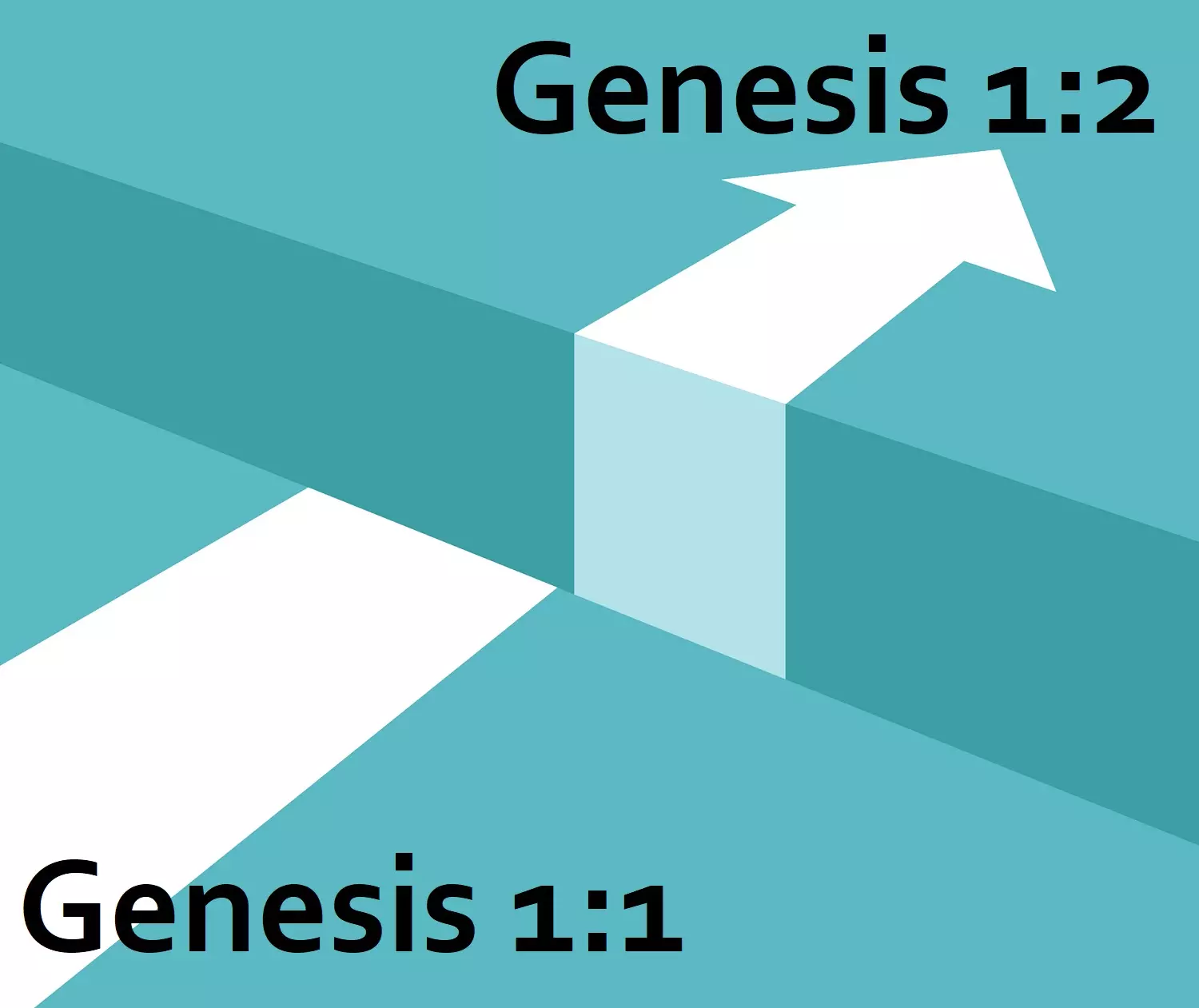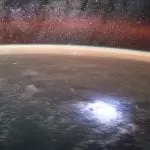[Originally published as From Genesis to Jesus, Part 2]
Concerning the Gap Theory, the general premise agrees with a literal rendering of Genesis, whereby all was created over the course of six days. The difference comes with the inclusion of an indeterminable amount of time between the first and second verse of Genesis.
A straightforward reading of Genesis 1:1 and 1:2(a) is as such:
- 1:1 – In the beginning God created the heaven and the earth.
- 1:2(a) – And the earth was without form, and void; and darkness was upon the face of the deep…
For Gap Theorists, during some undefined creative event taking place between these two verses, God established upon the young earth a great diversity of creatures, including a soulless race of hominins (many Gap Theorists claim the remains of these exist today in the fossils of the pre-Adamic Neanderthals and other ancient hominins).
Believers in this model contend that, after an unknown period of time, the angel Lucifer rebelled, and as he and many of the angels that followed him were cast out of the high realm of Heaven, they took revenge upon the creation below, destroying all and cataclysmically bringing the universe into a state of broken chaos.
Following this event, according to the Gap Theorists, the Scriptures resume the chronological retelling of a second period of divine creation, where a chaotic and formless planet, indeed the universe as a whole, was restored once again to a full and fruitful state of perfection, with much of the life that had been destroyed remade, and with the fateful advent of humanity accomplished at its end.
Obviously, for believers the question should be “Is it Biblical?”
Does the Gap Theory fit both the biblical record and the facts? Where, we must ask, does the Bible discuss the world that existed between Genesis 1:1 and Genesis 1:2? Where in Scripture may we find any information detailing that world, or the pre-Adamic race of the day? Do we find any textual account of a devastating and physical rebellion on the creation of that time by Lucifer and his fallen army?
In truth, the Bible is absolutely silent in every regard. The whole affair is entirely contrived!
So, Why Do They Believe It?
Supporters of the theory claim two primary sources of evidence for their belief. The first comes in the form of the terminology of Genesis 1:2, whereby the earth is described as formless and void. In the minds of these believers, there is a general misunderstanding stemming from the language of that statement and others, and through faulty theology concerning how and why God would produce anything in a state of chaos.
Some of their arguments however are worth exploring.
There is, in a sense, some merit to one basis for their interpretation of a gap.
We read in Genesis 1:2 that “the Earth was without form, and void; and darkness was upon the face of the deep.” As pointed out by competent scholars, the basis for one of their arguments stems from the simple word “was.” In Hebrew, the word is “hayah,” a word which can be translated not just as “was,” but also as “had become,” implying an action had taken place.
Along with this comes the Hebrew behind the phrase “without form, and void,” that being “tohu vav bohu.”
- Tohu (Strong’s Concordance 8414) tends to mean “formless or confused.”
- Bohu (Strong’s Concordance 922) references a “state of emptiness; void.”
Beyond their placement here in Genesis, they can be found in a few other places in the Scriptures, which some interpret as telling.
The most intriguing thing about the Hebrew phrase “tohu vav bohu” as it is used in Genesis comes not from the “formless” and “void” portions of the statement, but rather from that little conjunction associated with them: vav.
While “vav” is often translated as “and” (And the earth was …), there are many scholars that argue that the usage implies that “vav” should rather be understood in its adversative form: “but.” This, of course, is how the Septuagint has in many cases rendered “vav” here in Genesis 2. With these linguistic items applied as they have been noted here, the opening of Genesis reads quite a bit differently:
In the beginning God created the heaven and the earth. But the earth became without form, and void; and darkness was upon the face of the deep.
As compelling as this may be for one tempted to accept the “Gap Theory,” hold that thought for just a moment, as there is, I believe, a valid explanation.
Considering another bit of scripture that the theorists claim supports a gap, let’s look at Jeremiah 4:23-26:
I beheld the earth, and, lo, it was without form, and void; and the heavens, and they had no light. I beheld the mountains, and, lo, they trembled, and all the hills moved lightly. I beheld, and, lo, there was no man, and all the birds of the heavens were fled. I beheld, and, lo, the fruitful place was a wilderness, and all the cities thereof were broken down at the presence of the Lord, and by his fierce anger.
For them, these verses appear to describe a time predating the advent of man, before Adam, when the world was in desolation after Lucifer’s rebellion. They see the absence of man and the void and formless nature of the earth as indicators of the Pre-Adamic age, and contend that the references to broken down cities, along with the mention of birds and fruitful wilderness, as confirmations of the bountiful creation that preceded that in which we now reside.
Could it all simply be a misunderstanding?
Consider those Hebrew words and phrases we looked at in Genesis 2.
While there are certainly valid points behind the alternative interpretations of them, could the explanation be simply that we have overlooked something critical?
Could it be that, initially, God did form the universe with a certain degree of order that rapidly descended into chaotic disorder? I certainly believe so. Earlier we considered the notion of White Hole Cosmology, and it maintains that the first created feature of this universe was a hydrological superstructure, and that because of its intrinsic mass this superstructure collapsed into an enormous, black and chaotic gravitational anomaly. From this initial collapse however God formed order, day by day.
Though admittedly speculative, does this not fit with those “hidden” linguistics of verse 2? I believe it does:
- a low-entropy state of structure collapsed into a high-entropy state of chaos, and each passing day of creation brought gradual clarity and order back into the universe. It fits quite well indeed.
In considering the passage from Jeremiah, many scholars have suggested—accurately I believe—that he was not describing some past event here but rather a future one from his perspective: a prophetic depiction of Israel during a coming tribulation in which survivors flee the destroyed cities, heading instead to the safety of the secluded wilds.
Theorists here seem to miss this point, overlooking the fact that Jeremiah was a prophet known for foretelling the coming apostasy of Israel and the retribution it would bring upon that nation. In this context it is easy to see that the earth here was being described not as formless and empty, but rather destroyed and vacant.
Likewise, we see similar imagery in another verse cited by Gap Theorists
Isaiah 24:1 reads
Behold, the Lord maketh the earth empty, and maketh it waste, and turneth it upside down, and scattereth abroad the inhabitants thereof.
While the theorists contend that this is another reference to a destroyed Pre-Adamic race, it is rather like that of Jeremiah 4, describing the hellish conditions of a future tribulation.
– This was an excerpt from “Remnants of Eden: Evolution, Deep-Time, & the Antediluvian World.”







